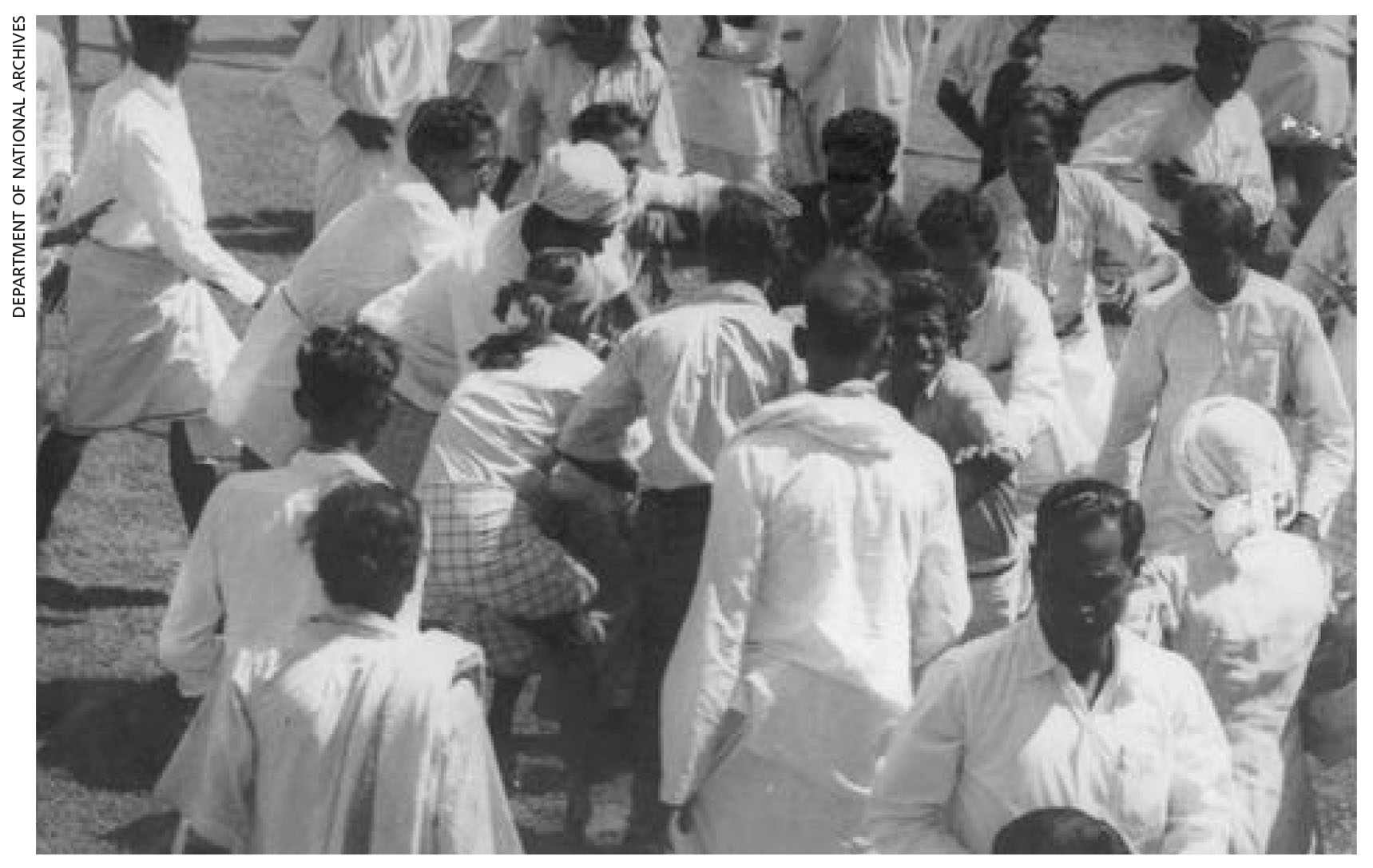1958
Anti-Tamil Pogrom Sets Nation Ablaze
The state language issue is deeply divisive
A week is a long time in the life of a nation turning upon itself and fellow citizens. And the seven days between 22 and 29 May 1958 spanned the crumbling pages of a dark chapter in Ceylonese history books.
It was an object lesson about the ramifications of gubernatorial failure to pay due and proper heed to the ethnic diversity of the island – one written in blood and tears.
The root of an islandwide anti-Tamil riot has been laid at the feet of the divisive Sinhala Only Act of 1956, which saw the Sri Lanka Freedom Party (SLFP) ride to power on the back of a chauvinist campaign that ostensibly reflected the inflamed desire of the majority Sinhalese to assert their supremacy.
In fact, a more radical analysis could also point to their frustrated ambitions in the aftermath of independence when – despite their aspirations to plum offices in a postcolonial milieu – the three-quarters of a population comprising the principal ethnicity found themselves being favoured less for administrative jobs by dint of a better educated Tamil population.
That ethnicity, comprising an estimated 25 per cent of the native populace, was equally subject to discrimination at the hands of the Official Languages Act (No. 33 of 1956) that compelled the Tamil minority to conduct the business of life and life of business in a tongue that was alien to them…
And Ceylon was thus poised on being taught the bitter and brutal lesson that language – especially policies thereof – are a perennial flashpoint.
In the end – and although an emergency that did little to quell the mutual hostilities was declared on the sixth day of the rioting – the death toll from this half a fortnight of islandwide violence was estimated to be between the official 158 dead whose bodies were identified and a possible 1,500 unaccounted for in far-flung arenas of conflict.
To add real injury to putative insults, 1958 alone saw an orgy of hatred and violence (ironically in response to a nonviolent satyagraha by Tamils protesting the language act) that was a harbinger of a maelstrom of killing, rape and looting – the likes of which would put Ceylon’s once bright future in jeopardy for several generations to come.
1958 alone saw an orgy of hatred and violence … that was a harbinger of a maelstrom of killing, rape and looting – the likes of which would put Ceylon’s once bright future in jeopardy




